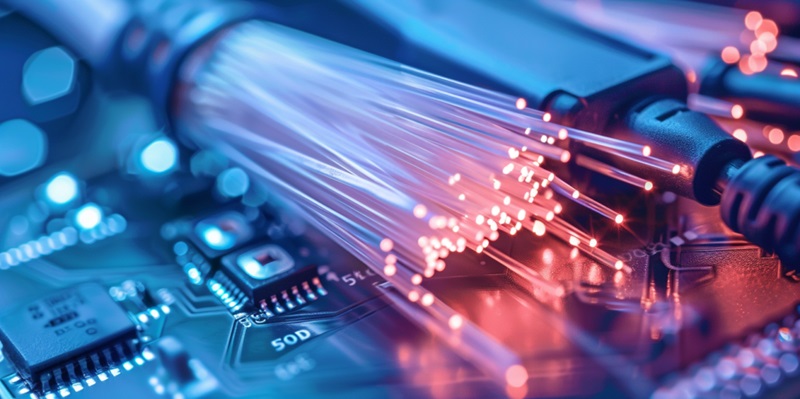The arrival of 5G technology has created ripples in telecom, potentially challenging the reign of fiber optics. This latest advancement in cellular network technology promises enhanced internet speeds, reduced latency, and greater connectivity. It’s often hailed as a transformative force in the tech landscape. Yet, when scrutinizing both 5G and fiber optics, it’s clear that the future may hold a collaborative rather than competitive relationship between the two.
While 5G brings the allure of wireless convenience and innovation, fiber optics boasts unmatched bandwidth capabilities and stability. Together, they could usher in a new era of internet connectivity, harnessing the strengths of both. Rather than one overshadowing the other, a unified approach might pave the way for unprecedented data transmission proficiency. This symbiosis suggests a merging of horizons in the field of digital communication, highlighting the potential for an integrated network solution that leverages the unique advantages of each technology.
Exploring the Potential of 5G
The prowess of 5G lies in its ability to handle a higher volume of data, allowing for the seamless operation of millions of devices within a densely populated smart city. These cities could potentially thrive on 5G’s fast-paced connectivity, with everything from traffic lights to self-driving cars communicating instantaneously. Moreover, 5G promises to facilitate breakthroughs in remote healthcare through its real-time data transmission capabilities. Yet, despite these monumental advancements, hurdles such as the need for massive infrastructure investments and questions about coverage and reliability in rural or less populated areas remain significant challenges.
The Resilience of Fiber Optics
Fiber optic technology is renowned for its robustness and efficiency in data transmission. This technology relies on a complex array of cables, which convey data at extraordinarily fast rates through light pulses. Its capacity for data and consistent signal integrity across vast distances are largely unrivaled. These characteristics make fiber optics a cornerstone in the infrastructure of internet providers globally, solidifying its essential place in the digital realm. Although wireless advancements continue to emerge, the importance of fiber optics does not wane. It sustains hefty data transfers and provides a steadfast, secure channel for a multitude of online activities. Fiber optics remains integral, affirming its enduring relevance even as the landscape of digital connectivity evolves.
Envisioning a Hybrid Future
Rather than one technology outdating the other, industry experts prophesy a hybrid infrastructure where 5G and fiber optics operate symbiotically. Fiber optics would provide a robust foundation to which 5G networks can connect, ensuring the best of both worlds — fiber’s stability joined with 5G’s mobility and flexibility. This collaborative design could address concerns over 5G’s limitations in providing consistent coverage over vast distances and in rural regions, using fiber optics to bridge gaps where installing 5G infrastructure may not be immediately feasible or cost-effective.
The Road Ahead: Integration and Innovation
The future of telecommunications is a tapestry woven from a variety of technologies, each contributing its strengths to an integrated network. In this burgeoning ecosystem, the synergy between 5G and fiber optics is a standout, signaling a move away from a singular approach to a combined, more powerful strategy. The merging of 5G’s rapid, cutting-edge capabilities with the robust, dependable nature of fiber optics is a testament to the sector’s commitment to innovation. Rather than opting for an either/or scenario, the telecommunications industry is pioneering a collaborative framework. This powerful combination promises to spark a revolution, bringing forth an era distinguished by the seamlessness of fiber’s consistency and the agility of 5G’s advancements. This complementary blend is poised to herald a new chapter in telecommunications, one that thrives on the coalescence of stability and revolution.

